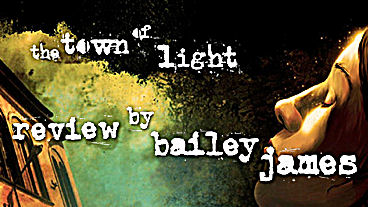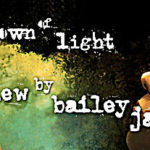
The Town of Light Review
The game is unpleasant to play, is poorly paced, and ultimately reads like a dated examination of a mental health issue







Genre: Exploration Adventure
Release date: February 26, 2016 (Windows/Mac)
Explorations of mental health have seen a recent renaissance in video games, and these representations fall on a spectrum of sensitivity when it comes to complex real-world issues and conditions. The most insensitive are games like Silent Hill or Far Cry 3 that use mental illness as a catchall motivation for the villain’s bad behavior. The best are titles like Depression Quest that further understanding of mental disorders for people who don’t have them and encourage more sensitive, nuanced discussion.
Italian developer LKA’s first game, The Town of Light, falls toward the less progressive end of the spectrum. In addition to relying upon surface examinations of mental illness, the studio has put most of its energy toward recreating the dimensions and architecture of a real-life Italian mental institution, Ospedale Psichiatrico di Volterra, and in doing so has sacrificed good gameplay and effective storytelling for the sake of slick graphics. The game is unpleasant to play, is poorly paced, and ultimately reads like a dated examination of a mental health issue.
The Town of Light’s gameplay takes place in Volterra, Italy, in 1942 at the aforementioned asylum (here renamed Charcot), though the true bulk of the story transpired years earlier in 1938. The protagonist, Renée, was sixteen at the time she was first forced into mental health care for what proved to be schizophrenia, and she has returned to the hospital to remember what happened to her there. The place is in a state of healthy decay now, with paint peeling from the walls and rust blossoming along the once-sterile metal surfaces. The gameplay feels similarly stale, a faded echo of the true story LKA is trying to tell. It’s clear from the first moments of the game, which reflects a sprawling announcement that the experience is “based on real facts and places,” that the game-makers are trying to capture something authentic about the lived experience of mental health many decades ago. That’s a noble aim. But by choosing a flashback-focused structure they are subtracting the impact of the sensations—of horror, of revulsion, of guilt—that they’re trying to provoke.
There’s a lot of heavy material covered in The Town of Light because a lot of bad things happen to Renée. She is abused, neglected, and sexually assaulted by the people who are supposed to be taking care of her, injustices detailed in a series of illustrated, narrated black-and-white images that are triggered by items and places in the environment. These portions are well-done and impactive, which only serves to highlight how disconnected these scenes are from the look and feel of the regular gameplay.
None of this is helped by the fact that the navigation of the story itself feels unnaturally constructed. The whims that guide Renée between story points feel arbitrary at best. She’ll have an urge to find her childhood doll, Charlotte (which will inexplicably remain in the building years after it’s closed despite an absence of other personal touches), then decide that the doll is cold and needs to be placed in the light, then feel a sudden urge to explore a different ward of the asylum, all without any recognizable external motivation. This could have been played as an example of Renée’s mental disorder, but in reality it came across as careless writing insufficiently guided by motivation.
Altogether, the story feels like a missed opportunity. The game sets itself up to give the player a unique insight into a historical moment and delivers that information uncreatively and insufficiently. The physical space could have been an inventive way to show the limiting conditions in which medical professionals had to operate at the time, or to reflect upon the formative time in Renée’s life before the asylum (which is currently delivered through a thick journal on the menu screen that isn’t an incorporated part of the game). The potential that’s been built is wasted and fizzles out by the end of the story.
A big clue as to why the story falls so flat is in the game’s constructed physical world. The Town of Light started out not as a game at all but as a project to reconstruct the Ospedale Psichiatrico di Volterra for instructive purposes. LKA is primarily an architectural animation firm that creates teaching projects, simulations, and renderings. This is the studio’s first foray into creating a game, which is probably why the visuals are more impressive than the story. A painstaking effort has gone into recreating the landscape and the structure of the asylum, and the buildings feel textured and realistic.
But while some elements, such as the light shining through a window and the pattern of rust on metal, are skillfully handled, others feel clunky and pull you out of the experience entirely. The physicality of the character is massively unconvincing—movement through the game world feels stiff and mechanical rather than human, and your character can be standing improbably far away from a door or book and still open it from across the room. Also, the game allows progress to be saved only after Renée has a revelation. Why? It’s an outdated limitation that only makes the game more irritating to play.
As for the tone, the game is billed as a horror title but feels anything but scary. Maybe it’s the lifeless feel of the landscape (inhospitable to either friend or foe). Maybe it’s the fact that the game started me in a shoddy playground at the base of a hill, which I spent several minutes trying to escape, instead of in front of the imposing institution. Maybe it’s the fact that my first in-game discovery was of an indulgently placed trophy reminding the player that The Town of Light was lauded for its storytelling before its release (even more irritating when you disagree with the honor bestowed). All these details felt amateurish on their own and together created something that tries to straddle the game/educational tool line while executing neither element well.
One of the most dangerous notions in modern video game design — in all modern storytelling, in fact — is that reconstructing the past is the same as telling a story. The game still might have worked despite its awkward fumbling if Renée had felt like anything more than a skeleton over which to drape the cloak of history. The ending in particular seems to be seeking to make a larger statement rather than explore the character the game created. The climax is an agonizingly long and detailed scene of Renée getting lobotomized that takes place from a third-person perspective, unlike the rest of the game. This is good for maximal shock value but disingenuous given the fact that the rest of the game takes place through Renée’s eyes.
Mental health care in mid-1900s Italy was deplorable and insufficient. That much is made clear. But that’s all we know. Renée doesn’t tie a human face to this dark period of history or add nuance to our understanding; she just typifies the kind of one-sided stories we already tell about mental health, where all doctors are evil and cruel and all patients are either feeble to the point of uselessness or incurably insane. The game adds nothing to our discussions of the past or the present. LKA’s instinct toward using history to speak truth is a good one, and hopefully its first foray into game-making is an incomplete demonstration of its skill and potential as a studio. But The Town of Light is an insufficient showing, a gleam on the surface that reveals no depth beneath.
|
+ Faithful reconstruction of an Italian mental asylum
+ Flashback scenes are beautifully drawn and interesting
– Lack of real character development through gameplay
– Inexpert writing
– Weak story structure de-emphasizes the most compelling parts of the narrative
– Clunky navigation and interaction
– Fails to advance discussion or understanding of mental health
– Not fun to play
|

|
Memory: 4 GB RAM
Graphics: NVIDIA GeForce GTX 460, AMD Radeon HD 6770 with at least 1 GB VRAM
DirectX: Version 11

Leave a Reply